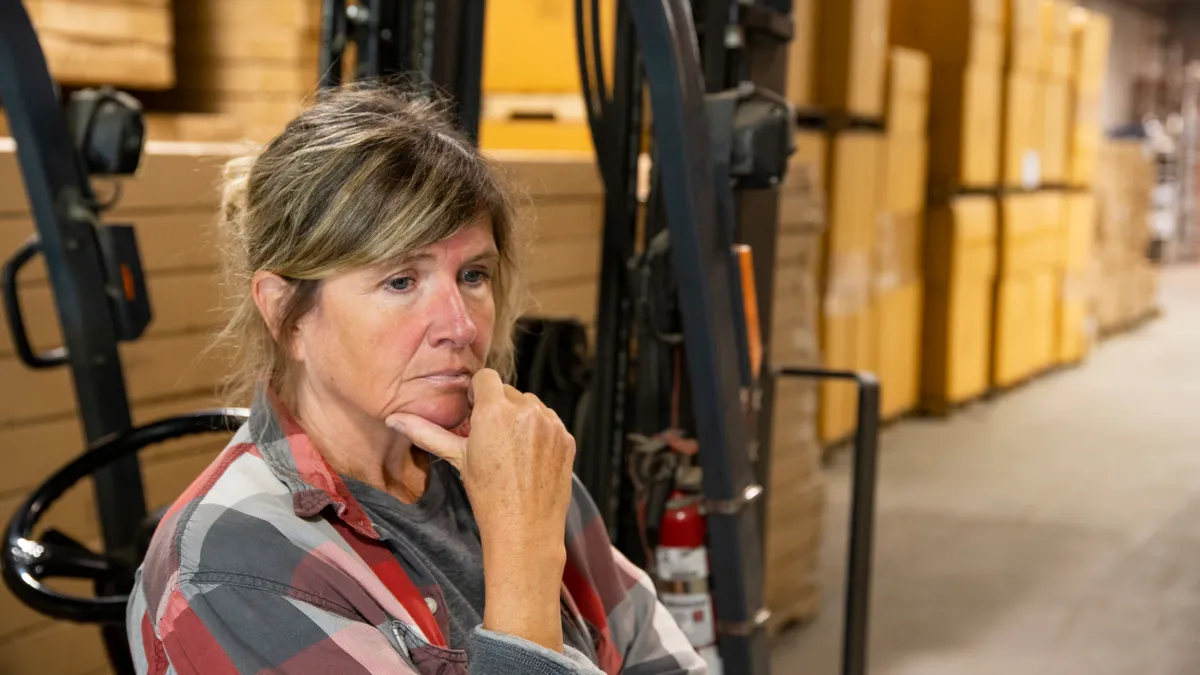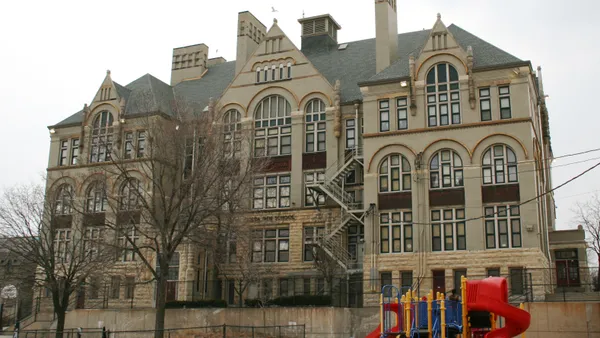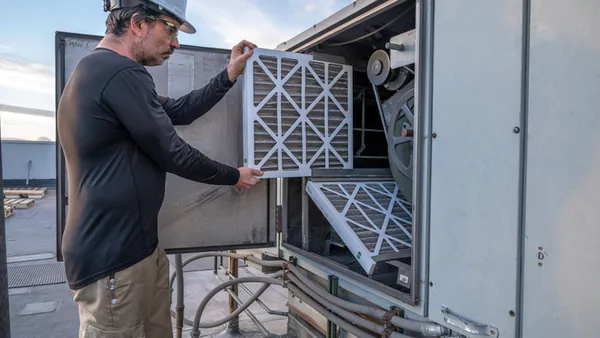For many facilities management teams, conversations about safety involve ways to protect the people onsite. While this is a critical priority and responsibility, discussions shouldn’t stop there. Safety extends beyond tenants and occupants to the employees who make up your facilities management team, making sure they have what they need to feel safe and protected at work.
Guidelines and procedures for things like fall protection, ladder safety, asbestos awareness, slips, trips and falls often come to mind first when you think about safety. However, there’s more to it than what you’ll find in today’s handbooks.
True holistic safety is about putting people first in every aspect of health. Taking this human-centered approach can help all of your employees — including your facilities management team — perform their very best at work every day.
Defining human-centered safety
Human-centered safety is also known as whole-person safety, Total Worker Health® (a term trademarked by the National Institute for Occupational Safety & Health) or holistic safety.
Instead of prioritizing only physical safety, human-centered safety takes a comprehensive and holistic stance that starts by reframing how workers are viewed. While team members are obviously employees, they’re also people who seek out value and purpose at work. Workers aren’t commodities that serve a single purpose for the company, but humans who can continue to learn and be enriched.
A human-centered safety program helps workers not only feel safe, but also valued, satisfied and whole. It ensures their own personal value and safety are not neglected while they work for the good of the business.
Human-centered safety helps facilities management teams prioritize:
- Injury and illness prevention inside and outside of work to enhance well-being in every aspect of an employee’s life — physically, mentally and emotionally.
- Skills improvement relating to relationship building, teamwork and positive interactions.
- Acknowledgement of the value employees bring to the company and their roles.
- Reducing the physical and mental toll of work whenever possible.
- The ability to collaborate, be honest and offer feedback without retribution.
Every individual plays a vital role
When everyone in your organization knows how to communicate and listen, conduct difficult conversations, think critically, solve problems, build relationships, practice empathy and demonstrate resilience amid change, then the result is a healthier, more inclusive and more productive environment.
That’s why human-centered safety emphasizes wellness and professional development for all workers — whether they answer calls at the helpdesk, respond to service tickets, or oversee the facilities management team.
“Whole-person safety puts workers in a position to utilize their skill sets to make decisions that will not only protect themselves physically and mentally, but also protect their coworkers,” says Jill James, chief safety officer at HSI. “Happiness, confidence and experiencing a sense of purpose and belonging matter just as much as being physically safe.”
Why human-centered safety matters today more than ever
As a result of the world around them, workers today often carry heavy baggage, whether that involves anxiety about what’s happening globally or simply the cost of living. According to a recent Gallup poll, 44% of employees worldwide report feeling lots of stress the previous day — making 2023 the second year in a row that worker stress is at an all-time high.
Consider these recent disruptions, which bring human-centered safety to the forefront in facilities management.
1. The strain of a fluctuating economy and high prices
Over the past decade, the United States has experienced an average inflation rate of 1.88%. In 2022, however, the annual inflation rate was much higher — at 8%. That puts it at a 40-year high. In other words, more workers today live paycheck to paycheck. These financial concerns can impact mental health and distract employees from their work, which negatively influences safety.
How can human-centered safety help? It fosters feelings of value, not vulnerability, proving to employees that their employer is in their corner.
This past summer, for example, heat stress was a concern for workers exposed to outdoor temperatures. While traditional safety training helps employees learn to safely manage heat, addressing work conditions directly is a step that lets employees know you care.
“I noticed at one manufacturing site that employees were overly taxed due to warm conditions,” explains Dr. Todd Loushine, EHS (environmental, health and safety) practitioner, former OSHA (Occupational Safety and Health Administration) compliance officer and associate professor at the University of Wisconsin-Whitewater. “This may not have led to heat-induced incidents, but addressing the HVAC system to cool the area better made a world of difference to the employees’ mental well-being, which made them more productive.”
2. A contentious political landscape
In recent years, there’s been a noticeable surge in political polarization. This naturally leads to worries about discrimination, inequality and the freedom to express opinions or views. When employees don’t feel comfortable due to divisive environments, this negatively impacts communication and collaboration, while also taking a toll on mental health.
In addition to physical safety training, human-centered safety integrates soft skills training on topics such as:
- Communication
- Diversity, equity and inclusion (DEI)
- Problem-solving
- Relationship building
Knowing that their employer is committed to encouraging growth fosters engagement and bolsters relationships among employees at all organizational levels.
3. The potential threat of artificial intelligence
Nearly one-quarter of workers say they’re concerned about artificial intelligence (AI) making their jobs obsolete. These concerns take hold most often among younger workers, workers from underrepresented groups and those holding lower-income positions.
Now more than ever, it’s critical to let your workers know that they’re valued and respected for their contributions. Human-centered safety helps you create a protected environment where they can express concerns and engage in conversations with leaders about how they might be impacted in their roles down the road.
Prepare now for the future of safety
While not all employees within the facilities sector may expect such a comprehensive, human-centered approach to safety yet, taking steps in this direction will make your company a better place to be for them — and for you.
What can you do? Online training on topics such as harassment, DEI and communication helps shed light on areas workers may not be paying attention to. It helps build a better culture at your workplace, building knowledge and skills for workers and their managers. This improved culture allows workers to be more at ease, making them more productive. It also keeps your employees engaged, decreasing staff turnover and the need for you to hire new workers who may not be as skilled.
Employees want to not only be safe but also bring their authentic selves to work without fear of how they may be accepted or treated. Adopting a safety approach centered on human well-being ensures your readiness to meet the rising expectations of your workforce as the industry evolves.
Keep reading:
Don't Forget the Human Element of Your Safety Program
Ways Soft Skills Training Supports Company Core Values
Learn more about how to prioritize human-centered safety in your own company by visiting www.HSI.com.










